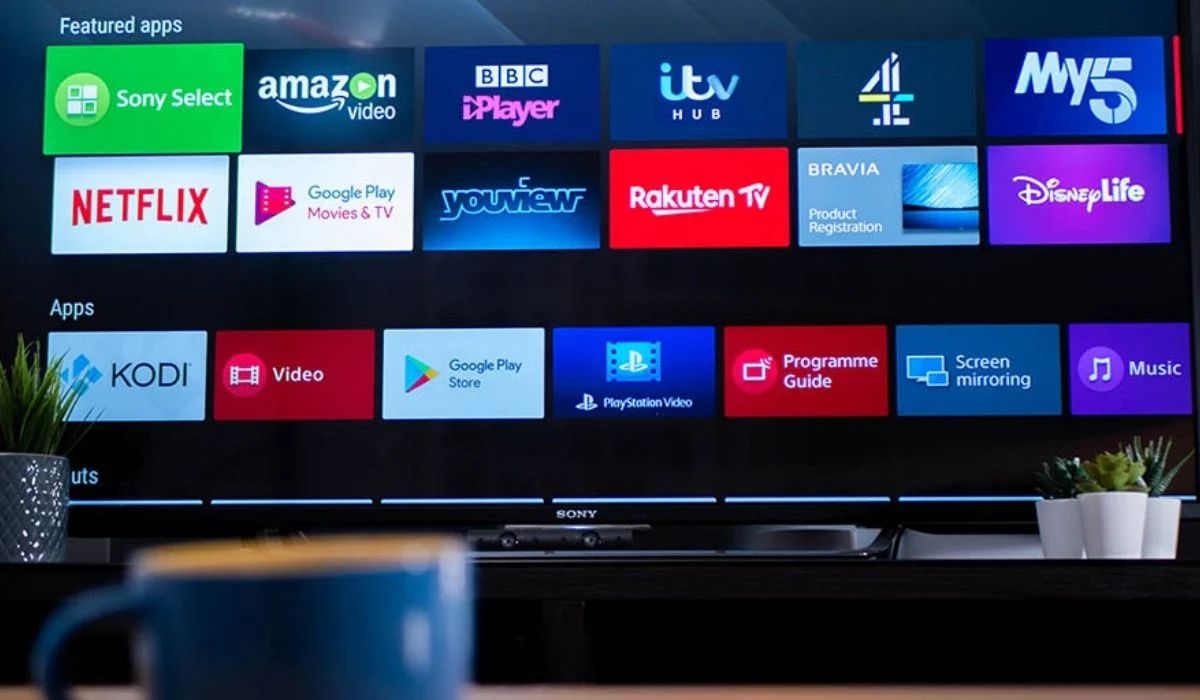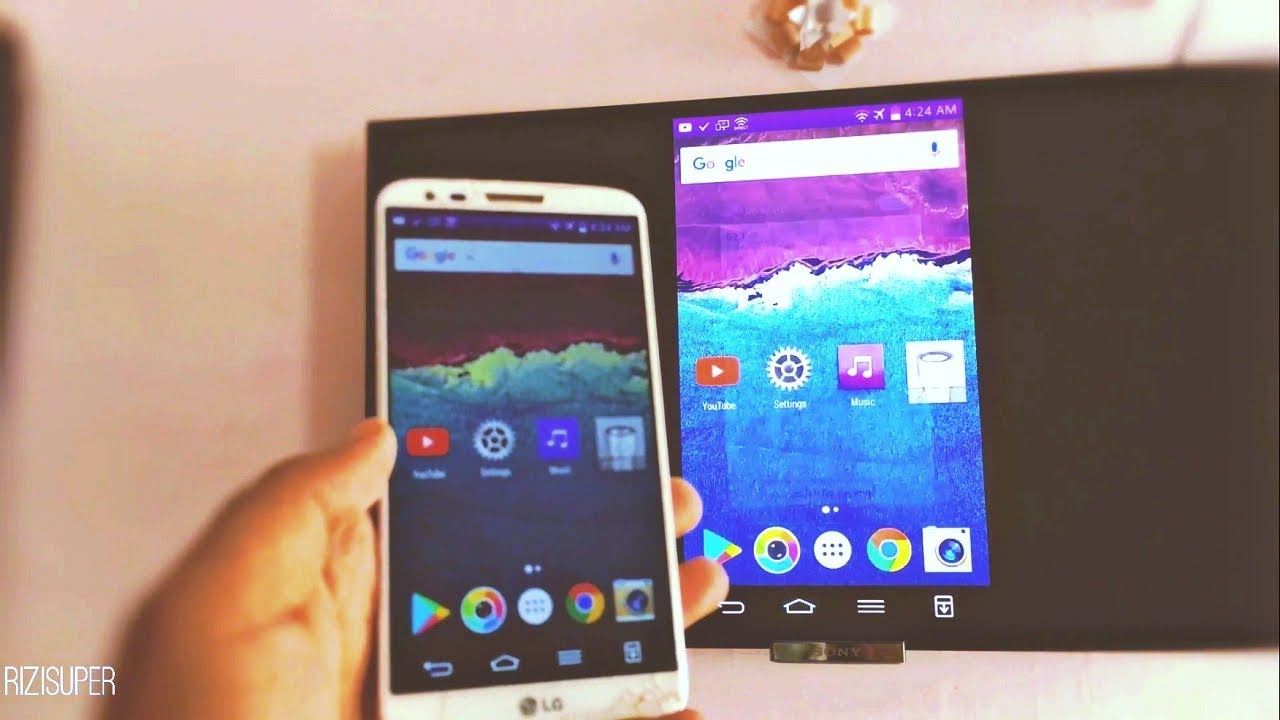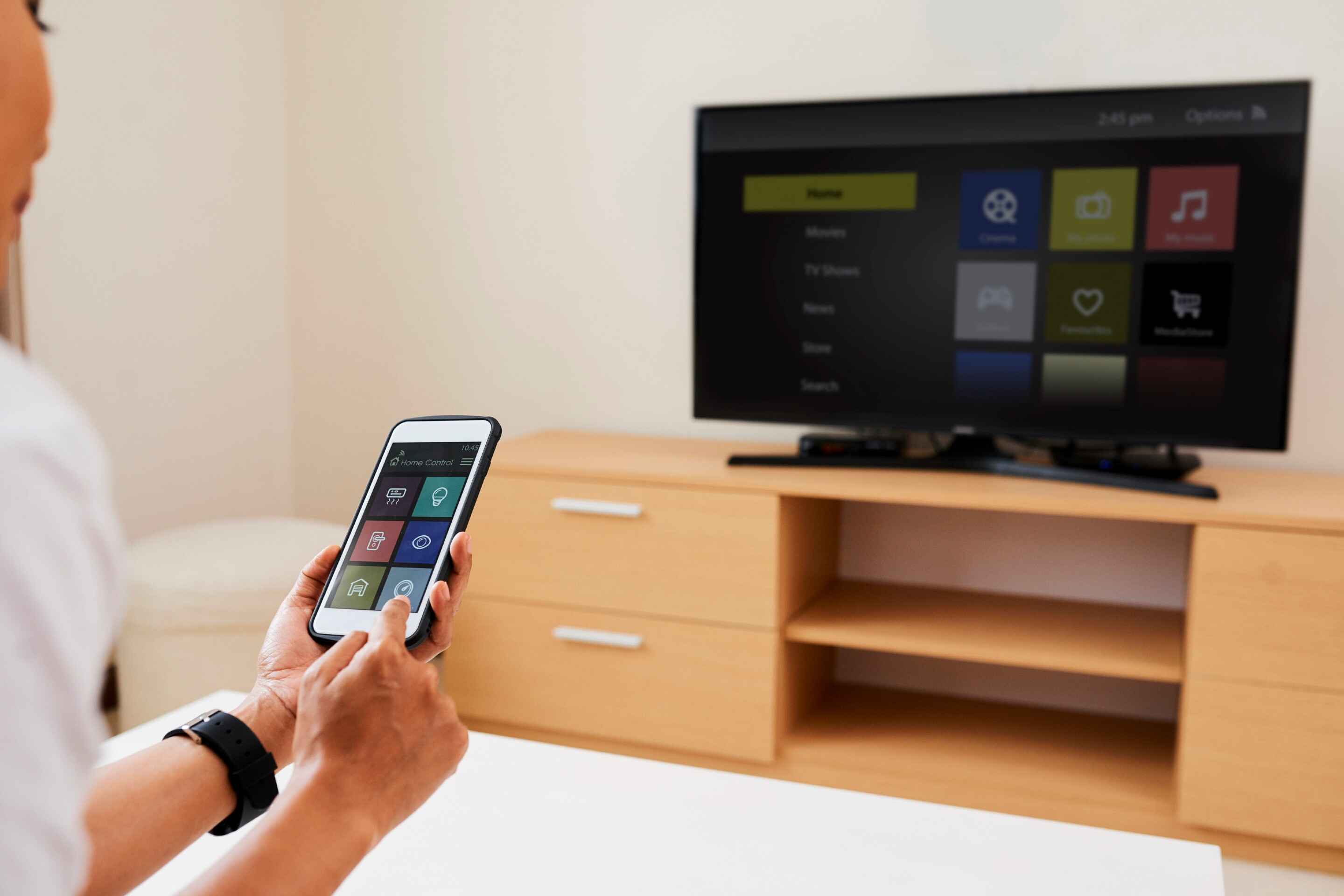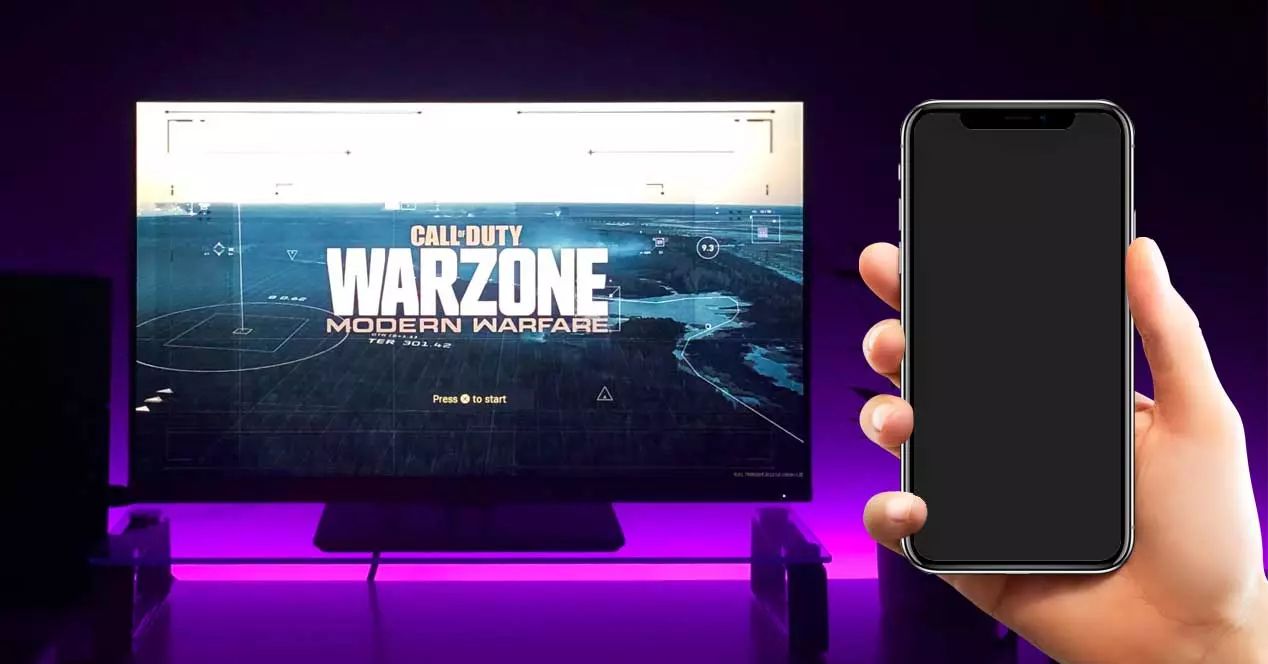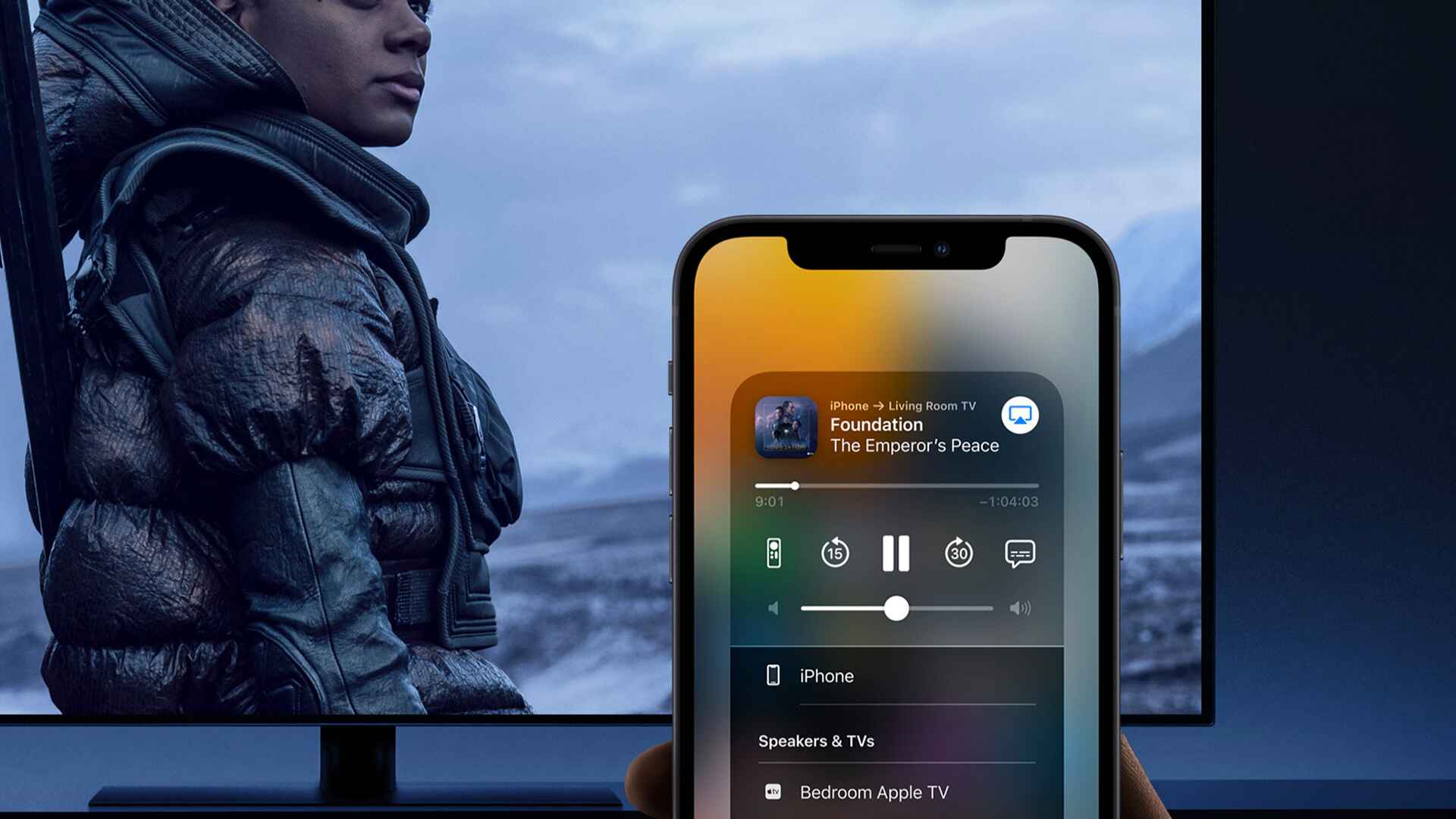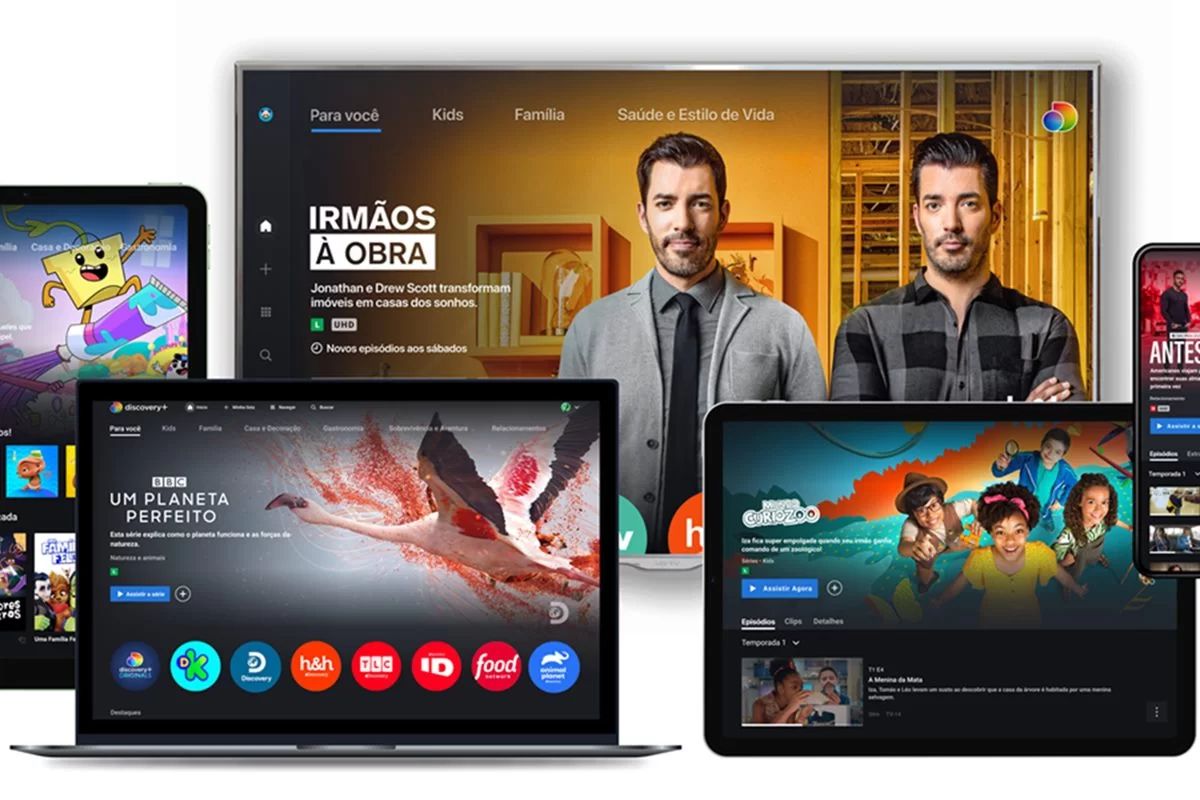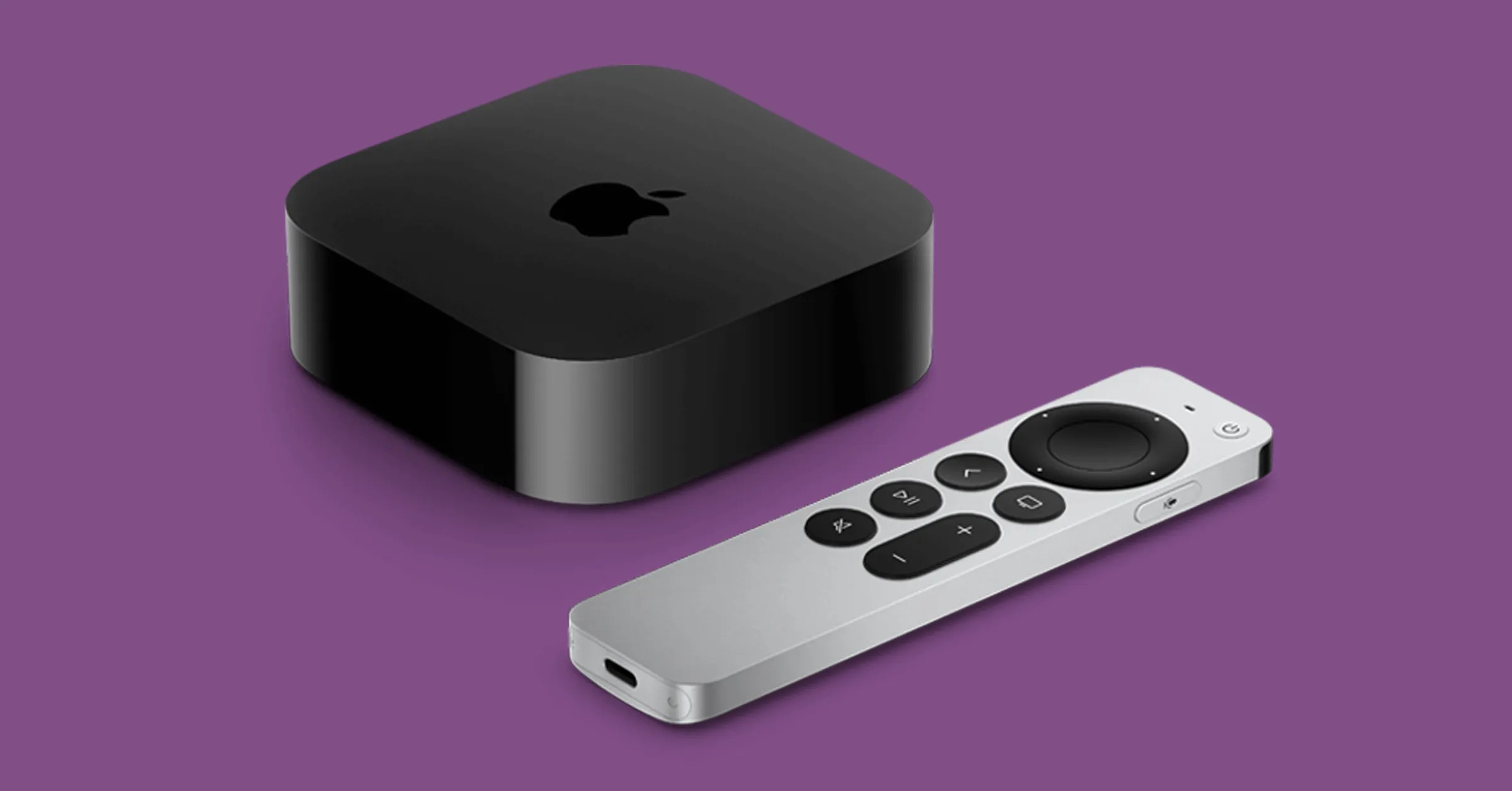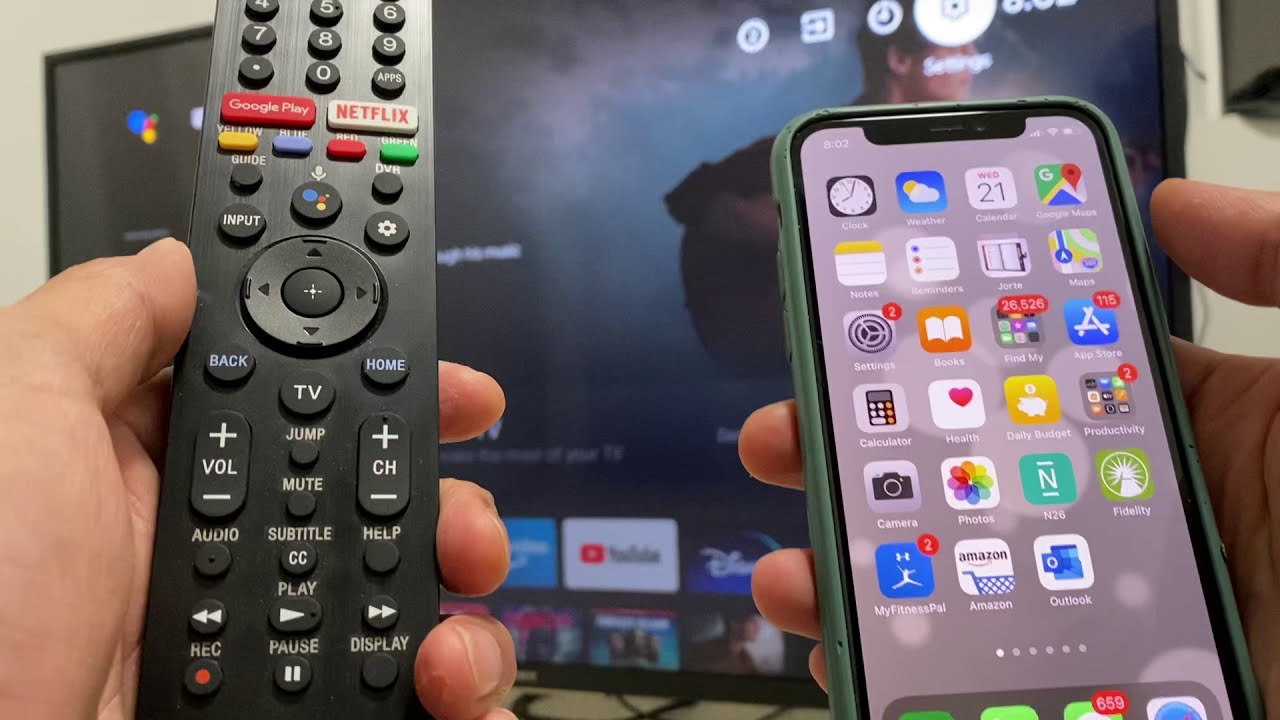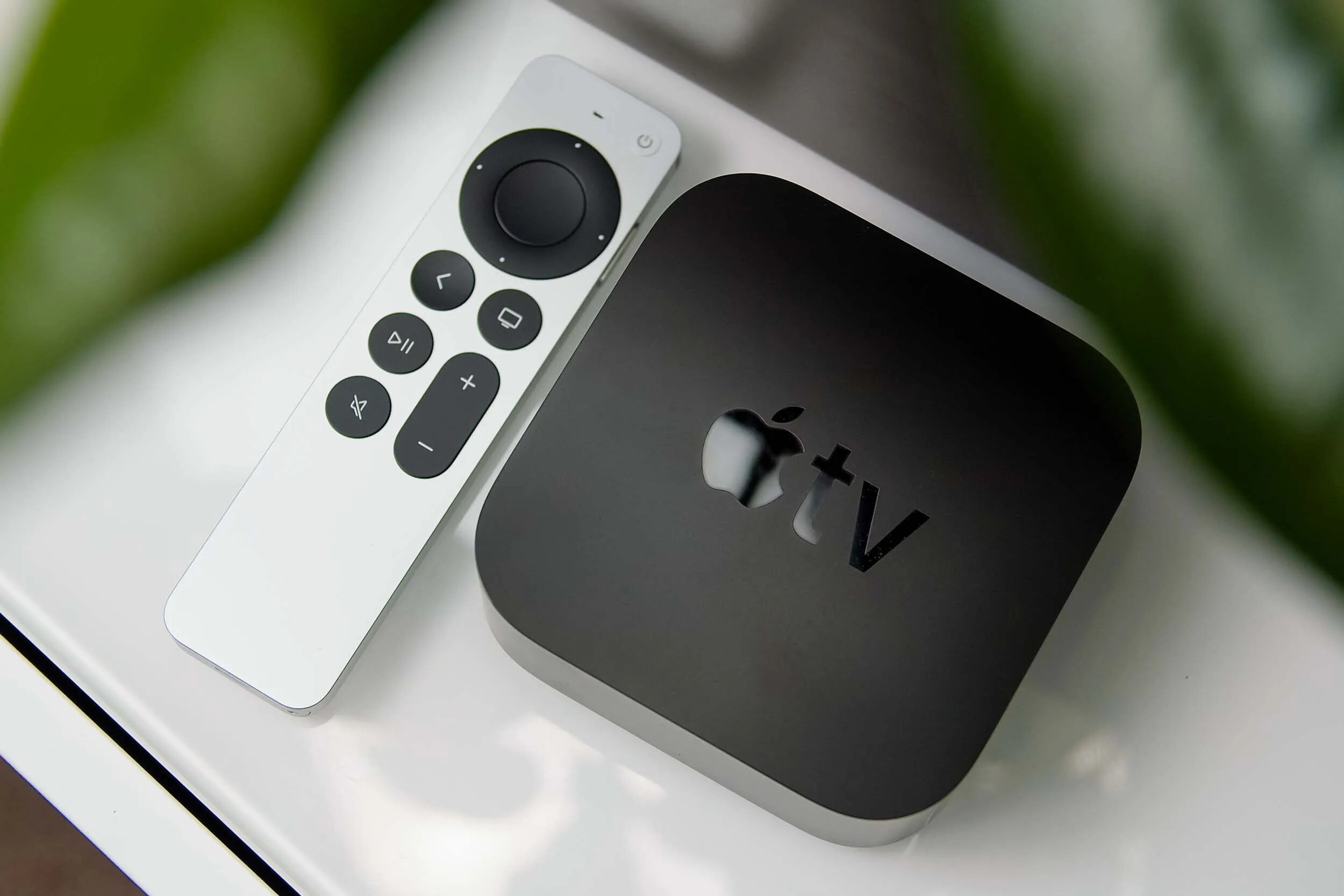Introduction
Streaming has become one of the most popular ways to enjoy entertainment content, allowing users to access their favorite movies, TV shows, and videos on demand. However, if you have a non-smart TV, you might be wondering how to stream content from your phone to the big screen. Fortunately, there are several options available that can easily transform your non-smart TV into a smart entertainment hub.
In this article, we will explore six different methods that you can use to stream content from your phone to a non-smart TV. Whether you want to watch your favorite YouTube videos, play games, or stream movies from popular platforms like Netflix or Amazon Prime Video, these methods will help you accomplish that seamlessly.
Each of the options we will discuss has its own advantages and requirements, so you can choose the one that best suits your needs and preferences. From HDMI adapters to streaming devices like Chromecast, Apple TV, Miracast devices, Roku Streaming Stick, and Fire TV Stick, we will cover them all.
So, if you’re ready to turn your non-smart TV into a smart one and enjoy endless streaming options, let’s dive into the different methods available to stream content from your phone!
What You Will Need
Before you begin the process of streaming content from your phone to a non-smart TV, there are a few essential items you will need:
- Smartphone: Make sure you have a smartphone that is compatible with the streaming method you choose. Whether you have an iPhone or an Android device, there are options available for both.
- Non-Smart TV: Of course, you will need a non-smart TV to stream content to. This could be an older model or a budget-friendly option that lacks built-in streaming capabilities.
- Internet Connection: A stable internet connection is necessary to stream content from online platforms. Ensure that your home has a reliable internet connection for a seamless streaming experience.
- HDMI Cable: Depending on the streaming method you choose, you may need an HDMI cable to connect your phone to the non-smart TV. This cable will transmit both audio and video signals, providing a high-quality viewing experience.
- Adapter or Streaming Device: This will vary depending on the specific method you decide to use. It could be an HDMI adapter, a Chromecast, an Apple TV, a Miracast device, a Roku Streaming Stick, or a Fire TV Stick.
- Compatible Apps: Install the necessary apps on your phone that are compatible with the streaming method you choose. For example, if you are using Chromecast, make sure you have the Google Home app installed.
Having these items ready before you start will ensure a smooth streaming process and enable you to enjoy your favorite content on the big screen of your non-smart TV.
Option 1: Using an HDMI Adapter
If your non-smart TV has an HDMI input, using an HDMI adapter is a straightforward way to stream content from your phone. Here’s how you can do it:
- Check the compatibility: Ensure that your smartphone supports HDMI output. Some newer models may require a USB-C to HDMI adapter, while older devices might need an MHL (Mobile High-Definition Link) adapter.
- Get the adapter: Purchase the appropriate HDMI adapter for your smartphone. You can find these adapters online or at electronics stores.
- Connect the adapter: Plug one end of the HDMI cable into the HDMI port on your non-smart TV and the other end into the HDMI port of the adapter.
- Connect the phone: Attach your smartphone to the adapter using the appropriate cables. For USB-C adapters, a USB-C to HDMI cable is needed, while MHL adapters require an MHL cable.
- Switch input: Use your TV remote to select the HDMI input that corresponds to the port where your smartphone is connected.
- Enjoy streaming: Once everything is connected, your phone’s screen will be mirrored onto the non-smart TV. You can now stream videos, play games, or display any content from your phone on the big screen.
HDMI adapters provide a reliable and high-quality streaming experience with minimal lag. They enable you to enjoy your favorite content on a larger display, making it perfect for sharing with family and friends.
It’s important to note that some smartphones may require additional settings adjustment to enable HDMI output. Refer to your phone’s user manual or online resources for specific instructions.
Option 2: Using a Chromecast
Chromecast is a popular streaming device developed by Google that allows you to stream content from your phone to your non-smart TV. Here’s how you can use a Chromecast:
- Connect Chromecast: Plug the Chromecast device into an available HDMI port on your non-smart TV. Ensure that the Chromecast is connected to the same Wi-Fi network as your phone.
- Download Google Home App: Install the Google Home app on your smartphone from the App Store (for iPhone) or Google Play Store (for Android).
- Set up Chromecast: Open the Google Home app and follow the on-screen instructions to set up your Chromecast device. This includes connecting it to your Wi-Fi network.
- Launch streaming app: Open a streaming app on your phone, such as Netflix or YouTube.
- Tap Cast button: Look for the Cast button within the streaming app and tap on it. This will display a list of available devices.
- Select Chromecast: Choose your Chromecast device from the list of available devices. Your phone’s screen will now be mirrored on the non-smart TV.
- Start streaming: Browse through the streaming app on your phone and select the content you want to watch. It will play directly on the TV screen while being controlled from your phone.
Using Chromecast provides a seamless streaming experience with excellent video and audio quality. It also allows you to control playback and volume directly from your phone.
Chromecast supports various streaming apps, including Netflix, YouTube, Hulu, Spotify, and many more. You can also use it to stream content from your phone’s browser or media gallery.
With Chromecast, you can enjoy your favorite shows, movies, and videos on the big screen without the need for additional cables or complicated setup.
Option 3: Using an Apple TV
If you own an Apple device, such as an iPhone or iPad, using an Apple TV is a great option to stream content on your non-smart TV. Here’s how you can set it up:
- Connect Apple TV: Connect your Apple TV device to an available HDMI port on your non-smart TV using an HDMI cable.
- Power up Apple TV: Plug in the power cord of the Apple TV device and turn it on.
- Set up Apple TV: Follow the on-screen instructions on your TV to connect the Apple TV to your Wi-Fi network and sign in with your Apple ID.
- Screen Mirroring: On your iPhone or iPad, swipe up from the bottom of the screen to access the Control Center. Tap “Screen Mirroring” and select your Apple TV from the list of available devices.
- Start streaming: Your device’s screen will now be mirrored on the non-smart TV. You can navigate through your phone or iPad and stream content from various apps such as Netflix, Hulu, or Apple TV+.
Apple TV offers a seamless streaming experience with excellent video and audio quality. It supports a wide range of apps and allows you to cast media from your Apple device directly onto the TV screen.
In addition to streaming, Apple TV provides access to various entertainment features, including Apple Music, Apple Arcade, and the ability to download apps from the App Store. It also supports voice control using Siri for a more convenient experience.
With Apple TV, you can enjoy a wide range of content on your non-smart TV, transforming it into a hub for all your entertainment needs.
Option 4: Using a Miracast Device
If you have an Android device that supports screen mirroring, using a Miracast device is an excellent option to stream content to your non-smart TV. Here’s how you can use a Miracast device:
- Check device compatibility: Ensure that your Android device supports Miracast or screen mirroring. Most modern Android phones and tablets have this feature.
- Get a Miracast device: Purchase a Miracast device, also known as a wireless display adapter or dongle, that is compatible with your TV.
- Connect the Miracast device: Insert the Miracast device into an available HDMI port on your non-smart TV.
- Switch TV input: Use your TV remote to select the HDMI input where the Miracast device is connected.
- Enable screen mirroring: On your Android device, open the Settings menu and look for the “Screen Mirroring” or “Cast Screen” option.
- Select Miracast device: Tap on the Miracast device from the list of available devices to establish a connection.
- Start screen mirroring: Your Android device’s screen will now be mirrored on the non-smart TV. You can navigate through your phone or tablet and stream any content you want.
Miracast provides a straightforward and wireless way to stream content from your Android device to your non-smart TV. It allows you to enjoy videos, photos, and even play games on the big screen.
With Miracast, you can experience high-quality audio and video without the need for additional cables or adapters. It provides a convenient way to enlarge your mobile content and share it with others.
While Miracast is primarily used for Android devices, some Windows devices also support this technology, making it a versatile option for screen mirroring on non-smart TVs.
Option 5: Using a Roku Streaming Stick
A Roku Streaming Stick is a popular device that allows you to stream content from your phone to a non-smart TV. Here’s how you can use a Roku Streaming Stick:
- Connect Roku Streaming Stick: Plug the Roku Streaming Stick into an available HDMI port on your non-smart TV.
- Power up Roku: Connect the Roku Streaming Stick to a power source using the included power adapter or USB cable.
- Switch TV input: Use your TV remote to select the HDMI input that corresponds to the Roku Streaming Stick.
- Set up Roku: Follow the on-screen instructions to complete the initial setup of the Roku device. This includes connecting it to your Wi-Fi network.
- Install streaming apps: Access the Roku Channel Store from your TV screen and download the streaming apps you want to use, such as Netflix, Hulu, or Disney+.
- Launch streaming app on your phone: Open the streaming app on your phone that supports casting, such as YouTube or Netflix.
- Tap Cast button: Look for the Cast button within the streaming app and tap on it. Select your Roku device from the list of available devices.
- Start streaming: Your phone’s screen will now be mirrored on the non-smart TV via the Roku device. You can control playback and navigate through the streaming app using your phone.
A Roku Streaming Stick provides an excellent streaming experience with a wide variety of apps and channels to choose from. It offers easy navigation, a user-friendly interface, and supports both free and subscription-based content.
In addition to streaming apps, Roku devices also provide access to other entertainment options, including music streaming services, news channels, and much more.
With a Roku Streaming Stick, you can transform your non-smart TV into a smart entertainment hub and enjoy a vast collection of content with ease.
Option 6: Using a Fire TV Stick
A Fire TV Stick, developed by Amazon, is another popular device that allows you to stream content from your phone to a non-smart TV. Here’s how you can use a Fire TV Stick:
- Connect Fire TV Stick: Plug the Fire TV Stick into an available HDMI port on your non-smart TV.
- Power up Fire TV Stick: Connect the Fire TV Stick to a power source using the included power adapter.
- Switch TV input: Use your TV remote to select the HDMI input that corresponds to the Fire TV Stick.
- Set up Fire TV Stick: Follow the on-screen instructions to complete the initial setup of the Fire TV Stick. This includes connecting it to your Wi-Fi network and signing in with your Amazon account.
- Install streaming apps: Access the Appstore on your Fire TV Stick and download the streaming apps you want to use, such as Netflix, Prime Video, or Hulu.
- Launch streaming app on your phone: Open the streaming app on your phone that supports casting, such as YouTube or Netflix.
- Tap Cast button: Look for the Cast button within the streaming app and tap on it. Select your Fire TV Stick from the list of available devices.
- Start streaming: Your phone’s screen will now be mirrored on the non-smart TV through the Fire TV Stick. You can control playback and navigate through the streaming app using your phone.
A Fire TV Stick offers a streamlined streaming experience with access to a wide range of apps and channels. It supports popular streaming services, including Prime Video, Netflix, Hulu, and more.
In addition to streaming apps, Fire TV Stick also provides access to other features, such as music streaming, games, and voice control using Amazon Alexa.
With a Fire TV Stick, you can easily transform your non-smart TV into a smart entertainment hub and enjoy a vast selection of content at your fingertips.
Conclusion
Streaming content from your phone to a non-smart TV is easier than ever with the various options available today. Whether you choose to use an HDMI adapter, Chromecast, Apple TV, Miracast device, Roku Streaming Stick, or Fire TV Stick, each method offers its own advantages and features.
Using an HDMI adapter provides a simple and reliable way to connect your phone to the TV, allowing for seamless streaming. Chromecast offers wireless screen mirroring and supports a wide range of streaming apps, making it a popular choice for many users.
If you are an Apple device user, Apple TV provides a comprehensive streaming solution, integrating seamlessly with your phone or iPad. Miracast devices offer Android users an easy way to mirror their screens onto the TV without the need for cables.
For those looking for a compact streaming device, Roku Streaming Stick and Fire TV Stick are excellent options. These devices offer a vast collection of apps and channels, transforming your non-smart TV into a full-fledged smart entertainment hub.
When selecting the best option for your streaming needs, consider factors such as device compatibility, ease of use, available apps, and audio and video quality. These factors will ensure a satisfying streaming experience.
Now that you know the different options available, you can choose the one that suits your preferences and turn your non-smart TV into a powerful streaming device. Enjoy streaming your favorite shows, movies, and videos from your phone to the big screen, creating an immersive entertainment experience right in your living room!







